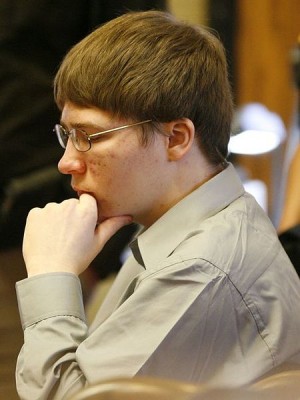Was Brendan Dassey's confession coerced? SCOTUS review is a 'long shot' in 'Making a Murderer' case

Brendan Dassey.
Lawyers for Brendan Dassey say they will continue to pursue relief for their client after an en banc federal appeals court rejected their argument that his confession was unconstitutionally coerced.
Lawyers for Dassey say their quest for relief includes a petition for certiorari to the U.S. Supreme Court, the Appleton Post-Crescent reports.
Dassey’s case was chronicled in the Making a Murderer Netflix series. In a 4-3 decision last Friday, the Chicago-based 7th U.S. Circuit Court of Appeals reinstated Dassey’s conviction for helping his uncle kill a woman.
Marquette University law professor Michael O’Hear told the Post-Crescent that the high court accepts for review only about 1 percent of the cert petitions filed. “Any appeal to the U.S. Supreme Court is a long shot,” he said.
Dassey had confessed at the age of 16 to helping Steven Avery kill photographer Teresa Halbach. She had gone to Avery’s auto salvage business on Halloween 2005 and never returned.
First, Dassey denied involvement. In another interview, he said he had seen parts of Halbach’s body in a bonfire. In a third interview, Dassey said he had helped move Halbach’s body to the fire. The story changed when Dassey said he had raped the woman. Next, he said he helped kill Halbach, and she had been stabbed.
After an interrogator asked who shot Halbach in the head, Dassey said, “He did.” Later, Dassey revised upward the number of times that Halbach was shot and where the shooting occured.
The 7th Circuit majority acknowledged that Dassey was a juvenile with limited intellectual ability. His interrogators had asked some leading questions and had assured Dassey that honesty would produce leniency. And there were inconsistencies in his confession.
But Dassey “provided many of the most damning details himself in response to open-ended questions, according to the majority decision by Judge David Hamilton.
Hamilton also said Dassey “was not subject to physical coercion or any sort of threats at all.” That is important, he said, “given the history of coercive interrogation techniques from which modern constitutional standards for confessions emerged.”
One of the dissenting judges, Ilana Rovner, said courts need to update their understanding about the nature of coercion in confessions. “Reform of our understanding of coercion is long overdue,” she wrote.
“Our long‐held idea that innocent people do not confess to crimes has been upended by advances in DNA profiling,” Rovner added. “We know now that in approximately 25 percent of homicide cases in which convicted persons have later been unequivocally exonerated by DNA evidence, the suspect falsely confessed to committing the crime.”
Factors that can influence a person to confess include youth, mental illness, cognitive disability, suggestibility and a desire to please, Rovner said.
O’Hear told the Post-Crescent that the Supreme Court is usually drawn to clear disputes about the meaning of the law, instead of cases with differing versions of the facts.
“Dassey’s appeal is in something of a gray area between ‘law’ and ‘fact,’” O’Hear said. “His lawyers will want to argue that the 7th Circuit majority was not merely mistaken about the facts of the case, but also about the governing law.”
Northeastern University law professor Daniel Medwed agreed it’s difficult to get a cert grant.
“But the Supreme Court could give us more clarity on this, and it might be the right time to review [juvenile] interrogations,” he told the Post-Crescent. “It’s possible the Supreme Court would say, ‘let’s take a look’ and review the case.”
Write a letter to the editor, share a story tip or update, or report an error.


